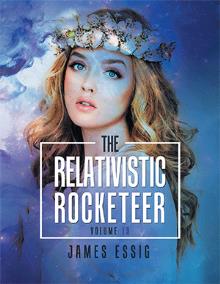Gateway To The Solar System And Beyond
by
Book Details
About the Book
There is something comforting about notions of reactionary or other forms of impulse space travel. At a time when wormholes and warp-drives are common topics of discussion among many advocates of advanced spacecraft propulsion, the notion that the speed of light may be an inviolable limit can be comforting. Well, in this book I have your comfort covered in many ways. This book provides simple mathematical descriptions of how we will likely travel about the solar system and beyond. The book is mostly non-mathematical but the math included in this book is at the level of high-school algebra. It is my opinion that much of the developing science of manned space-flight can be explained via relatively easy math and formulations. Impulse or reactionary propulsion at near the speed of light has profound applications including but not limited to potential hyperspatial travel. However, the focus of this book is more near-term and is highly relevant toward 21st Century applications. For those adverse to any mathematical content, you likely will also find this book a fun read. As such, I include much prosaic explanations along with very simple arithmetic to back up the propositions made in this book. Back in the days while I was a teenager, I attended a private school. The school psychologist was a consecrated Catholic religious brother with dark hair and a dark beard who used to let me ride in his fancy Ford Thunderbird. The car had a black exterior and interior. Well, at about the same time, the sitcom, “The Jeffersons” was popular and the show theme song had a refrain that went like “Well we’re movin’ on up. (Movin’ on up). To the east side.”. Even back then I was interested in interstellar travel concepts. To make a long story short, I associated the school psychologist and rides in his Thunderbird with my internalized mantra of Movin’ on up, to the future, at near light-speed. Thus, I became more hooked on special relativistic space travel and time dilation. The fire of my imagination for near light-speed travel was lit just as assuredly as the black Ford Thunderbird resembled the eternal black cosmic void. I knew then the ramifications of infinite time dilation, infinite forward time travel, and infinite travel distances through space made mathematically plausible for light-speed impulse travel. So, if you have the courage to delve into this book, or even only study select portions thereof and wade through the math, you will likely if not already also become intrigued with Movin’ on up into the future with Special Relativity. As we now have a space travel industry, we have set before us the seas of infinity. Sailing these seas is what this book is all about.
About the Author
I have been a science author and interstellar propulsion researcher for about 8 years now. I became really hooked on the interstellar travel theme after responding to a thread on a popular website about interstellar travel about 14 years ago and received a very warm welcome from the site administrator . At that time, I knew I was destined to become seriously involved in this exciting field of research. My love of interstellar travel had its genesis in my childhood. Through most of my elementary school age years, I was a shy kid but one who was far from the stereotypical reserved nerdy geek. My grade school report cards where generally good but where far from the straight A cards that the academically focused students would receive. I had a very personal dream, however, that motivated me to get through the often boring school days. This dream is that for an unbounded future of human interstellar space-flight. My infatuation with manned space exploration began early in grade school, fueled by the Apollo Space Program and lunar landings and the promise of manned missions to distant planets in the not-so-distant future. It seemed as though by the 1980s, we would definitely be sending humans on Martian exploratory missions. My interest in manned space travel waned a bit during the late 1970s through the mid-1990s, but picked up again after I had read a book on real world potential interstellar travel methods based mainly on known and well established physics.






















